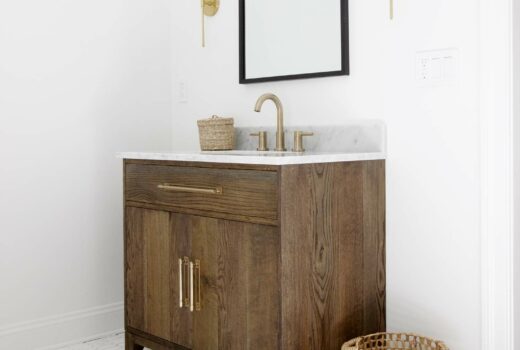
A great shower tile can add beauty and style to your bathroom, making morning routines or evening wind-downs feel like we’re in a luxurious spa. As much as they are beautiful, they also get dirty with soap scum, mineral deposits, and even mildew. These things can build up, leaving those tiles looking less than stellar. Here are some tips and suggestions on how to clean shower tile.
Understand Your Tiles
Before you start, it’s important to know what type of tile you have. There are several kinds: ceramic, porcelain, natural stone, and glass are just a few examples. Each has its unique characteristics and cleaning requirements. For instance, natural stone tiles can be sensitive to acidic solutions, which means vinegar or lemon-based cleaners are a no-no.
Start with Basic Cleaning
Materials:
- Warm water
- Mild dish soap
- Soft cloth or sponge
Steps:
- Mix a few drops of dish soap with warm water.
- Dip the cloth or sponge into the solution and wring it out, so it doesn’t drip.
- Wipe down the tiles gently, moving in circular motions.
- Rinse with clear water and dry using a clean towel.
Tackle Soap Scum and Hard Water Stains
Materials:
- White vinegar (For ceramic, porcelain, or glass tiles only!)
- Baking soda
- Spray bottle
- Brush with soft bristles
Steps:
- Fill a spray bottle with equal parts of white vinegar and water.
- Spray the solution generously on the tiles, focusing more on the problem areas.
- Let it sit for about 10 minutes.
- Create a paste using baking soda and water. Use this to scrub areas with heavy soap scum using the brush.
- Rinse with clear water and dry.
For natural stone tiles, consider using a pH-neutral cleaner instead of vinegar to avoid etching the surface.
Addressing Mold and Mildew
Mold and mildew thrive in damp environments, and your shower can be a prime location. To tackle these issues:
Materials:
- Hydrogen peroxide (3% concentration)
- Spray bottle
Steps:
- Fill the spray bottle with hydrogen peroxide.
- Spray it directly onto mold or mildew spots.
- Allow it to sit for at least 10 minutes.
- Scrub the area gently with a soft brush.
- Rinse with water and dry.
Hydrogen peroxide is a safer option for most tiles than bleach, which can discolor grout and certain types of tiles.
Keep That Grout Sparkling
Grout can be a magnet for dirt and grime. To clean it:
Materials:
- Baking soda
- Water
- Old toothbrush
Steps:
- Create a paste with baking soda and water.
- Apply this paste to the grout lines.
- Use the toothbrush to scrub the grout gently.
- Rinse thoroughly with clear water and dry.
For deeper stains or discolorations, you might consider a commercial grout cleaner.
Seal the Grout
To protect the grout and keep it cleaner for longer, consider applying a grout sealer. This creates a barrier against moisture and grime. You can find grout sealers at your local hardware store or on Amazon. Just ensure to choose a product that is compatible with your tile type.
Prevention is Better Than Cure
A few habits can help prevent significant build-ups:
- Squeegee after showering: This simple habit can prevent water spots, soap scum, and mineral deposits.
- Ventilate: Ensure your bathroom is well-ventilated to prevent mold and mildew growth.
- Regularly clean: Instead of waiting for grime to build up, set a schedule to clean your tiles once a week or every two weeks.
Avoid Harmful Chemicals
Many commercial cleaners contain chemicals that can harm both your tiles and the environment. Natural cleaners like vinegar, baking soda, and hydrogen peroxide are often just as effective without the harmful side effects.
Remember always to test any cleaner on an inconspicuous spot before using it on your entire shower, and always read and follow any manufacturer’s instructions for your tiles and cleaning products.




No Comments